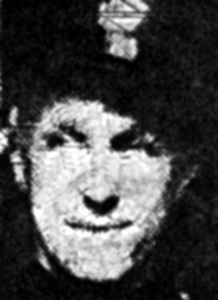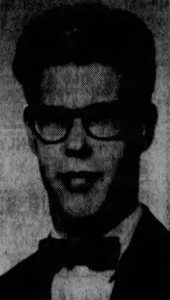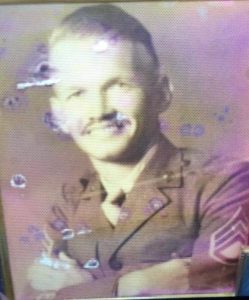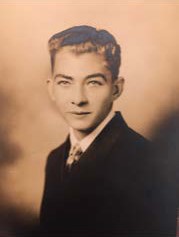
Harold Peter Turner, age 35, from Chico, California, Butte county.
Service era: Korea
Date of death: Thursday, January 29, 1953
Death details: On the evening on January 28, 1953, a B-29 Superfortress (tail number 42-65357A) with a crew of fourteen departed Kadena Air Base in a flight of four. The briefed mission was a night bombing operation targeting the Kompo-Dong supply yard south of Pyongyang, North Korea. Shortly after releasing its payload, the B-29 was attacked by enemy MiG-15 fighters. Just after midnight, the aircraft commander made a distress call and ordered the crew to bail out. A few minutes later, witnesses reported the Superfortress caught fire and exploded in midair near Hungsu-ri. It is believed that five airmen were still aboard the aircraft when it exploded. The nine surviving crew members were captured by the North Koreans; three of them were returned to U.S. custody following the war, and one is known to have died at the Pike’s Peak prisoner interrogation center. While being moved in a convoy to a holding site, the remaining five prisoners were “liberated” by a group of Korean irregulars, believed to be North Koreans masquerading as South Korean guerrillas. Later that day, the B-29’s Aircraft Commander (Captain Gilbert Ashley) was allowed to contact United Nations Forces. On April 24, U.S. forces attempted to rescue the five men, but the rescue aircraft was fired upon during the attempt and the efforts were abandoned. Later reporting revealed the loyalty of the guerrilla unit and the probability that it had used the prisoners as bait. The five prisoners became known as the “Ashley 5,” after the Aircraft Commander, and all five of them remain unaccounted-for, along with the five who were believed to be aboard the plane when it exploded and the one who died at the Pike’s Peak center. Captain Harold Peter Turner, who joined the U.S. Air Force from California, was assigned to the 28th Bombardment Squadron, 19th Bombardment Group. He was the pilot of this Superfortress when it went down, and was among five survivors known as the Ashley 5. He remains unaccounted-for. Today, Captain Turner is memorialized on the Courts of the Missing at the National Memorial Cemetery of the Pacific.Relativeswerelatertoldthoseaboardsurvivedthecrashandwereheldcaptivebytheenemy.
Source: National Archives, Defense POW/MIA Accounting Agency, San Francisco Examiner (1997)





